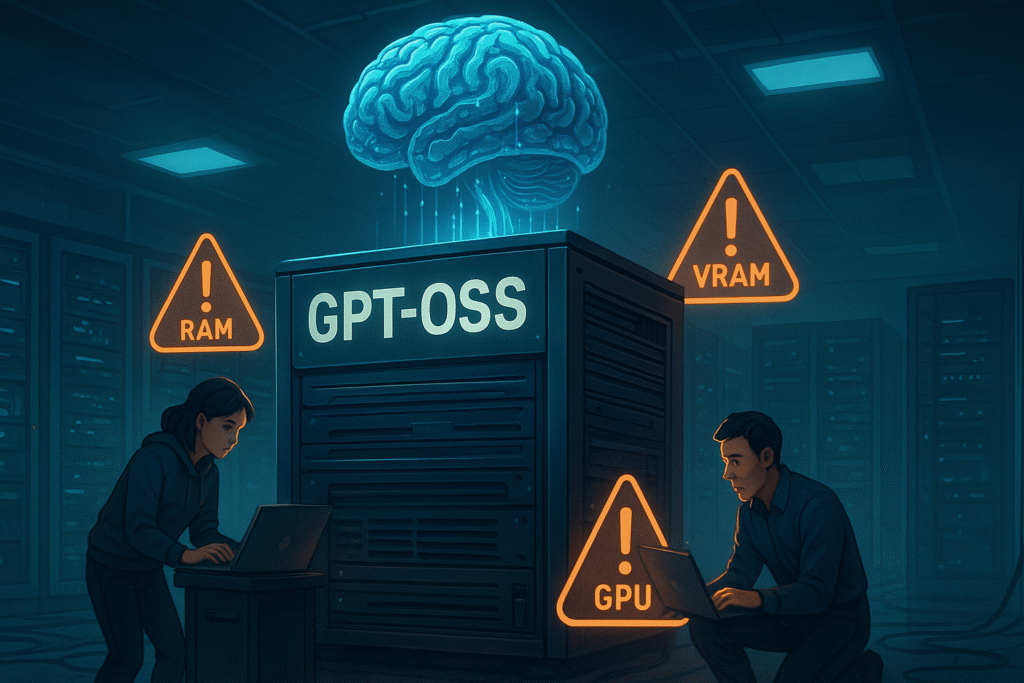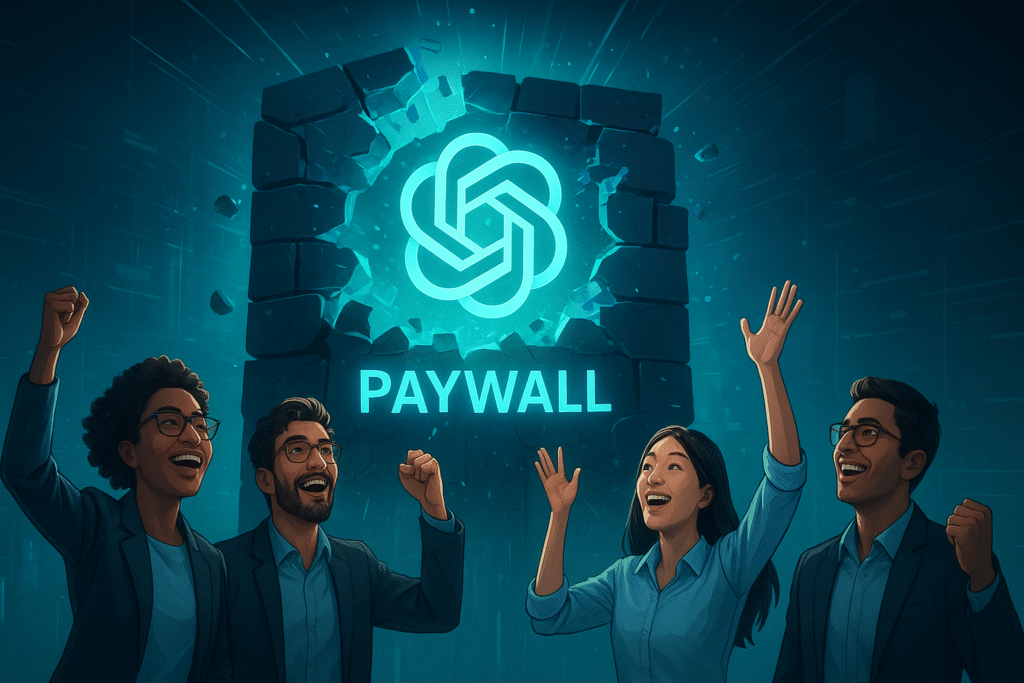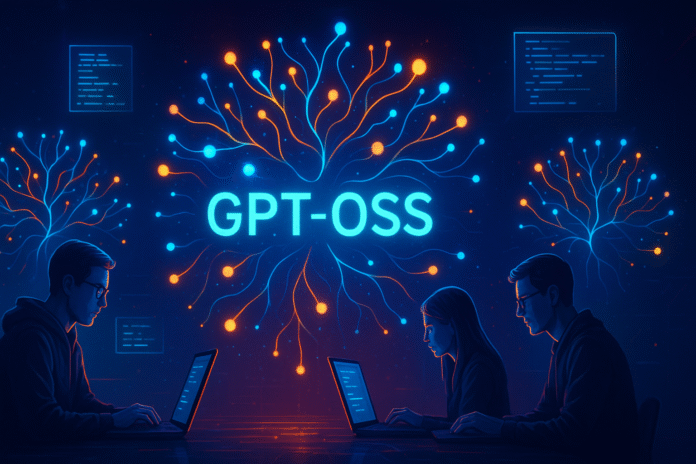Artificial Intelligence is everywhere these days, and OpenAI is taking the lead with next- tools kept behind paywalls, GPT-OSS is completely open-source. Developers, scientists, and founders can snag the full code, adjust what they want, and run it however they see fit. The ripple effect on labs, startup founders, and weekend creators is hugelevel tools. The brand-new release—GPT-OSS, the Open-Source Suite of supercharged AI models—lets basically anyone with a laptop tap into cutting-edge AI. Unlike older
What is GPT-OSS?
GPT-OSS stands for Open-Source AI models released by OpenAI. These are large-scale language models with open weights, meaning their internal parameters are available for public use. OpenAI has released them under the Apache-2.0 license, allowing anyone to modify, redistribute, or integrate the models into their own applications. This is a huge shift from earlier GPT versions, which were mostly proprietary and required paid API access
Released Versions
OpenAI has introduced two main versions of GPT-OSS:
- gpt-oss-120B: This is the larger, high-performance model with 120 billion parameters. It is designed for complex AI tasks such as coding, advanced reasoning, content generation, and research applications.
- gpt-oss-20B: This is a smaller, lightweight model with 20 billion parameters. It is faster and more resource-efficient, suitable for smaller projects, startups, and personal use on consumer-grade hardware.
Both models are optimized to handle a wide range of natural language tasks while allowing customization for specific domains
Performance & Benchmarks
Although GPT-OSS models are open-source, their performance is comparable to OpenAI’s proprietary models like o3-mini and o4-mini. They can:
- Generate coherent text
- Solve coding and programming tasks
- Perform advanced reasoning
- Answer complex questions
However, GPT-OSS models may have some limitations in multimodal capabilities, such as understanding images or audio, which are better handled by GPT-4o or GPT-5. Still, for most text-based applications, GPT-OSS offers powerful performance with full control to the user.
Key Features

Some key features of GPT-OSS: OpenAI’s Powerful Open-Source AI Models Changing the Future of AI Development include:
- Open-source access: Free to use, modify, and distribute.
- Self-hosting: Models can be run locally or on private servers, ensuring data privacy.
- Fine-tuning: Users can train models on domain-specific data like healthcare, finance, or legal content.
- Flexibility: Can be integrated into custom applications, chatbots, content generators, and research tools.
- Developer-friendly: Supports easy deployment and experimentation without API restrictions.
Use Cases of GPT-OSS
1. Domain-Specific Applications
Fine-tuning the model lets fields like healthcare, law, and finance pull in custom predictive insights or personalized recommendations.
2. Academic Research
Scientists can load in huge datasets, ask GPT-OSS to summarize findings, and auto-generate chunks of manuscripts or slide decks.
3. Startups & Businesses
Founders can plug in the model to whip up slick chatbots, churn out marketing copy on the fly, or deliver no-wait virtual support.
4. Edge AI Deployment
Smaller models can run straight off a phone, laptop, or local server, so private experiments stay private and data never leaves the device.
Why GPT-OSS is a Game-Changer
Here’s why the GPT-OSS launch is so important:
OpenAI finally decided to share its best model publicly. That’s a big change from the way things used to work.
You can now run the model on your own hardware, no API fee needed.
This evens the field so anyone can experiment, personalize, or create amazing projects.
It also boosts the open-source label, putting open-source credibility on the same stage as Meta’s Llama, but with OpenAI’s own polish.
Challenges & Limitations
Even with all its promise isn’t perfect:
It wants plenty of RAM and VRAM. Send theseahead or face slowdowns.
It can’t yet handle images or audio as freely as GPT-4o or the even newer GPT-5.
The big 120-billion-parameter model demands cutting-edge GPUs to run smoothly.
Any puddle of bugs or needed tweaks has to be filled by the user community, not a dedicated support squad.
Future of OpenAI’s Open Models

The GPT-OSS launch hints at a lively future with plenty of open and strong AI. Here’s the short roadmap:
The library of GPT-OSS models will expand, getting faster and smarter with every edition.
New tools will help you fine-tune models for specific industries or one-time tasks.
You’ll see a new wave of startups and universities creating clever applications based on open AI tech.
The AI community will spark with friendly discoveries together. competition, pushing faster breakthroughs and sharing more
Conclusion
To wrap up, the release of GPT-OSS—OpenAI’s cutting-edge open-source AI models—marks a game-changing moment for everyone interested in artificial intelligence. By making top-tier models publicly available, OpenAI lets developers, researchers, and companies dive into the technology, tinker with it, and build real-world solutions faster than ever. No matter if you’re working on academia, a startup, or a weekend coding hobby,shows us a future where AI tools are for everyone and innovation rests with the global community



